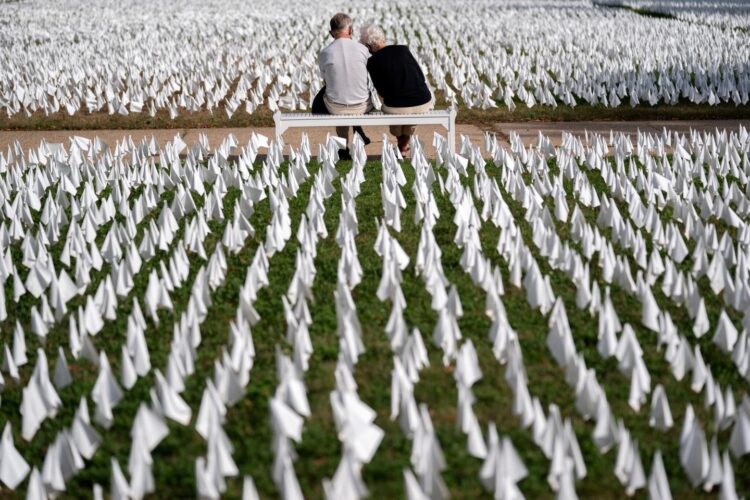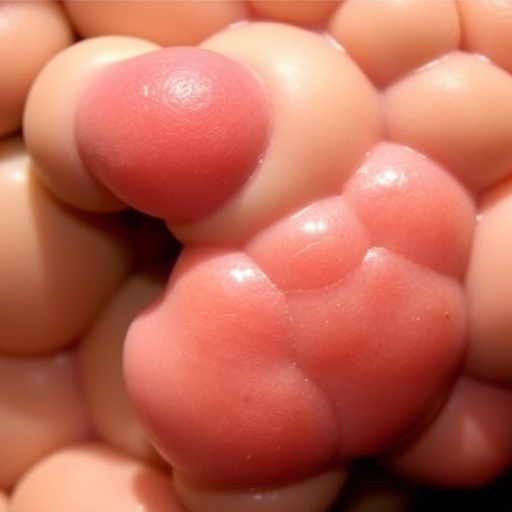Artist Suzanne Brennan Firstenberg’s ‘IN AMERICA How Could This Happen…’ pays tribute to lives lost throughout the pandemic

Credit: Bruce Guthrie
WASHINGTON (Mar. 1, 2021)–In fall 2020, thousands visited the COVID-19 public art installation “IN AMERICA How Could This Happen…,” which took place just two miles east of the U.S. Capitol. People traveled from across the country to see personalized flags for those who had died. Today, the artist, Suzanne Brennan Firstenberg, with help from the George Washington University and University of Maryland, has launched a digital version in an effort to continue honoring those who have died.
“While the physical exhibition has ended, the deaths from Covid-19 continue,” Firstenberg said. “We hope this digitized version of the art will provide national acknowledgement and comfort for everyone who has lost loved ones.”
The digital version of the flag installation includes dramatic and sweeping drone images of the exhibition, an interactive map of personalized flags where a visitor can click on flags to see its message and a search tool to help visitors find a loved one’s name. A mechanism has been created to add a flag with personalized message to the digital memorial. Other interactive components include the ability to drag an arrow over a birds-eye-view of the exhibition to see ‘before’ and ‘after’ imagery.
The collaboration between Firstenberg and the researchers from GW and UMD grew from a conversation that Firstenberg had with Sarah Wagner, an associate professor of anthropology at GW. Wagner was visiting the memorial as part of a research project, “Rituals in the Making,” that she and several other GW faculty and students began in May 2020. Funded by the National Science Foundation, the study looks at how COVID-19 has affected funeral, burial and commemorative practices. While the project largely focuses on how mourning rituals move into digital spaces, “In America” and its field of flags offer another view of the improvised, creative forms used to remember lives lost to this pandemic.
“Over and over in our research, we’ve heard from families, clergy, funeral directors and hospice workers that COVID-19 has robbed people of not only their loved one but also the ability to mourn together and draw support from one another,” Wagner said. “Suzanne’s installation utterly overpowered me when I first stepped onto the field–it was one of the few spaces that insisted we acknowledge the scale of loss by recognizing each life. The digital version keeps that going, flag by added flag.”
To create a digital version of the memorial, a group of students, staff and faculty from GW and UMD visited the installation over Thanksgiving weekend to begin the mapping process. Under the leadership of Wagner and Adam Fracchia, an assistant research professor of anthropology at UMD, the group systematically worked their way through the installation, physically marking, labeling and plotting out the individual location of each flag that had a dedication.
Maggie Peterson, an archaeologist, academic department administrator in GW’s anthropology department and graduate student in geographical information systems at GW, collected the physical graph paper maps, and created a digital map using Esri’s mapping software ArcGIS to match the ground coordinates of the installation. With the support of several other GW students, the group recorded each flag’s dedication message and individual geolocation, so that the virtual flag links up to a photograph of the one placed at the physical installation.
“At the physical memorial, my mind raced on how to help continue this installation,” Peterson said. “ArcGIS StoryMaps came to mind as an ideal format for telling the story of the installation and emphasizing the intersecting aspects of this collaboration. We combine visual art, data analysis and human interaction into one space, which enables people to comprehend the massive impact this virus has on a fathomable scale, while also highlighting every individual’s story.”
###
To visit the digital memorial, where you can request to add a flag, click here. Interviews with visitors of the physical exhibition who have lost loved ones to COVID-19 are available upon request. Multimedia is also available upon request.
-GW-
Media Contact
Timothy Pierce
[email protected]
Original Source
https:/





